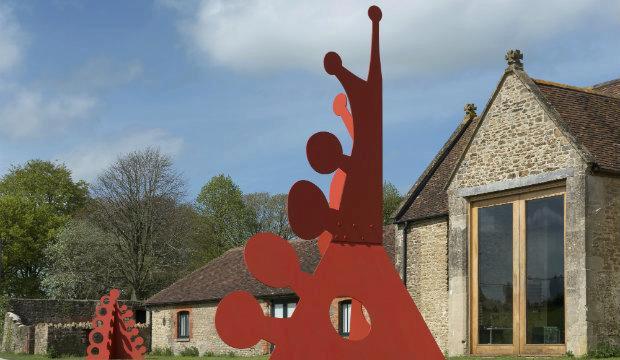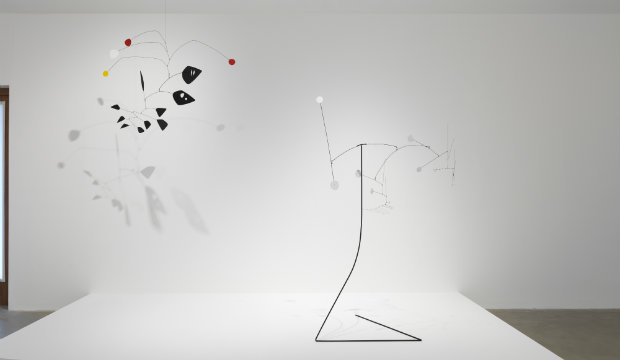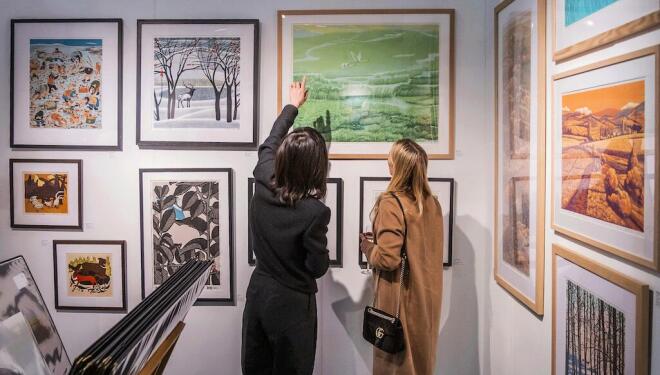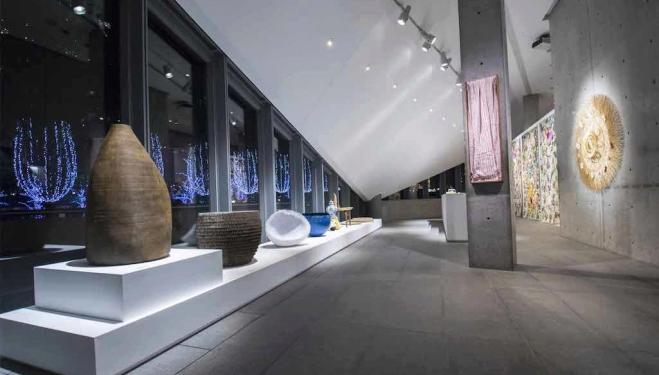
With a roster of successful summer shows already under its belt, Hauser & Wirth Somerset is no stranger to international hype and crowds — Senior Director Alice Workman reckons 50,000 visitors will make the Calder pilgrimage this summer.

Installation View: Alexander Calder: From the Stony River to the Sky. Alexander Calder, Funghi Neri, 1957
Tracing Calder’s remarkable story, from budding young artist in Connecticut to international superstar, this solo show brings together almost 100 mobiles, large-scale outdoor sculptures, stabiles and oil paintings, spanning the artists’ prolific career. With no clear chronology or thematic narrative, the exhibition, instead, prioritizes Calder's preoccupation with the act of making. His works – which explore medium, scale, abstraction and movement – run across Hauser's five galleries and glorious gardens. Mobiles dance, larger-than-life tripod sculptures vibrate, and abstract compositions throb with energy; here resides a great battalion of Calder’s kinetic army.
Calder's interest in movement and performance was paramount to his success as an artist. An early champion of kinetic art, Calder pushed the boundaries of sculpture by introducing the fourth dimension of time. Liberating sculpture from its traditional grounded nature, Calder's steel wire and sheet metal constructions challenged traditional hierarchies of art. Propelled by the wind, his intricate mobiles flutter and glide in space. Complete with revolving parts and jingling suspended wires, they offer a totally new sculptural experience.

Installation View: Alexander Calder: From the Stony River to the Sky.
Among Calder's celebrated object-sculptures, including Apple Monster, made from a fallen branch of an apple tree, and his large-scale outdoor sculptures, are lesser-known works that have never been seen before in the UK. The curated selection of domestic objects, borrowed from Calder’s Roxbury farmhouse, deserve good time and attention. By adding a new handle here, a decorative coil there, utilitarian objects, such as coffee cups, toasters, milk skimmers and scabbards are transformed by Calder into beautiful, intriguing works of art. Re-purposing old to create new was an integral part of Calder's creative process. It's what makes his art so special.
Regarded as one of the pioneering abstract sculptors of the twentieth century, Calder's works continue to command big sums at Post War & Contemporary sales and are coveted by high-profile museums and collectors world wide. Seeing such a magnificent collection of Calder’s work – the majority is on loan from the Calder Foundation – is pure magic.
But there's so much more to Hauser & Wirth Somerset than this remarkable exhibition. The gallery's gorgeous environs, delicious restaurant – Roth Bar and Grill makes all their food with Durslade Farm's own produce – and landscaped gardens, devised by garden designer Piet Oudolf, more than merit the long-ish train journey from London. Once you've seen the exhibition, take the time to wander around Oudolf's classic perennials and contoured beds that lead up to the glorious garden hilltop, now home to the Radić Pavilion (the Serpentine Pavilion in 2014). Offering soothing views over the surrounding meadows, the Pavilion is an ideal spot for a morning refuel.
Just under two hours from London, pioneering expressionist Alexander Calder merits the day trip!
| What | Review: Alexander Calder, Hauser & Wirth, Somerset |
| Where | Hauser & Wirth Somerset, Durslade Farm, Dropping Lane, Bruton, Somerset, BA10 0NL | MAP |
| When |
26 May 18 – 09 Sep 18, Closed on Mondays |
| Price | £free |
| Website | Click here for more information |



